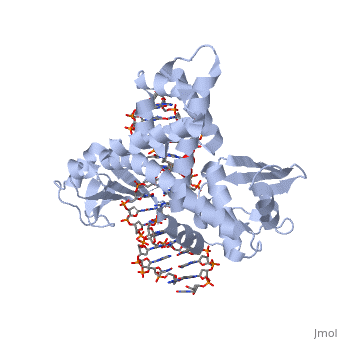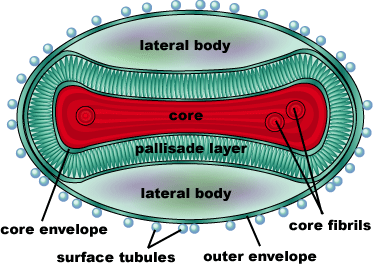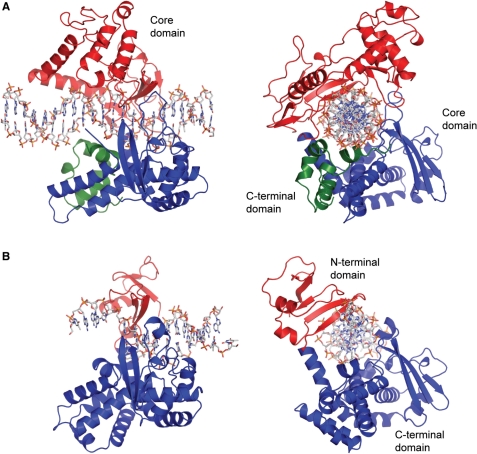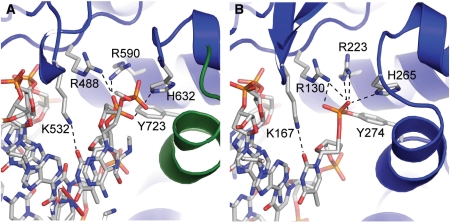Wade Cook/Sandbox 1
From Proteopedia
(New page: == Smallpox (Variola Virus) - Topoisomerase 1B == Smallpox is an acute, highly contagious disease which causes disfiguring and febrile rash-like illness which has no known cure. Accordin...) |
|||
| (One intermediate revision not shown.) | |||
| Line 1: | Line 1: | ||
== Smallpox (Variola Virus) - Topoisomerase 1B == | == Smallpox (Variola Virus) - Topoisomerase 1B == | ||
| - | Smallpox is an acute, highly contagious disease which causes disfiguring and febrile rash-like illness which has no known cure. According to some health experts, smallpox was responsible for more deaths than all other infectious diseases combined thus far in the world's history. Throughout most of human history, the disease caused high morbidity and mortality leading to the deaths of approximately 500 million persons in the 20th century alone. As a result, an intensive public health vaccination campaign was initiated by the World Health Organization (WHO) in the 1960’s and succeeded in eradicating smallpox as a human disease. There were two forms of the disease worldwide: Variola major, the deadly disease, and Variola minor, a much milder form. Although naturally occurring smallpox no longer exists, the threat of smallpox returning remains due to concerns that the variola virus might exist outside of these repositories and could be used as an agent of bioterrorism or biowarfare. As a result, it is critical to understand the molecular dynamics and virulence factors in order to prepare for a potential epidemic and to prevent the devastating consequences. | ||
| - | |||
<StructureSection load='3igc' size='350' side='right' caption='Structure of Variola Topoisomerase 1B with DNA (PDB entry [[3igc]])' scene=''> | <StructureSection load='3igc' size='350' side='right' caption='Structure of Variola Topoisomerase 1B with DNA (PDB entry [[3igc]])' scene=''> | ||
== Disease == | == Disease == | ||
| + | Smallpox is an acute, highly contagious disease which causes disfiguring and febrile rash-like illness which has no known cure. According to some health experts, smallpox was responsible for more deaths than all other infectious diseases combined thus far in the world's history. The disease caused high morbidity and mortality leading to the deaths of approximately 500 million people in the 20th century alone (Smith, 2013). This resulted in an intensive public health vaccination campaign initiated by the World Health Organization (WHO) eradicating smallpox as a human disease in the 1960’s . There were two forms of the disease worldwide: Variola major, the deadly disease, and Variola minor, a much milder form. Although naturally occurring smallpox no longer exists, there are concerns that the variola virus could be used as an agent of bioterrorism or biowarfare. As a result, it is critical to understand the molecular dynamics and virulence factors in order to prepare for a potential epidemic and to prevent the devastating consequences. | ||
[[Image:Smallpoxvirus.gif]] | [[Image:Smallpoxvirus.gif]] | ||
== Function == | == Function == | ||
| Line 13: | Line 12: | ||
[[Image:Comparison_of_Euk_and_Viral_Topo.jpg ]] | [[Image:Comparison_of_Euk_and_Viral_Topo.jpg ]] | ||
| - | In the above figure, [A] shows the C-terminal and N-terminal domains of eukaryotic topoisomerase 1B. [B] shows the C-terminal and N-terminal domains of viral topoisomerase 1B. Both domains are highly conserved between the different species, however, the N-terminal domain of viral topoisomerase 1B is slightly smaller and more simple than the larger eukaryotic N-terminal domain. The type 1B topoisomerase can relieve negative or positive supercoiling without the use of ATP. As long as there's torsional strain on the DNA strand from the supercoiling, this is enough potential energy to drive the uncoiling of the strand. Both eukaryotic and viral topoisomerase 1B enzymes contain a highly conserved active site consisting of five common amino acid residues. These residues are Tyr, Arg, Arg, Lys, His/Asp. | + | In the above figure, [A] shows the C-terminal and N-terminal domains of eukaryotic topoisomerase 1B. [B] shows the C-terminal and N-terminal domains of viral topoisomerase 1B. Both domains are highly conserved between the different species, however, the N-terminal domain of viral topoisomerase 1B is slightly smaller and more simple than the larger eukaryotic N-terminal domain. The type 1B topoisomerase can relieve negative or positive supercoiling without the use of ATP. As long as there's torsional strain on the DNA strand from the supercoiling, this is enough potential energy to drive the uncoiling of the strand. Both eukaryotic and viral topoisomerase 1B enzymes contain a highly conserved <scene name='71/716575/Active_site/1'>active site</scene> consisting of five common amino acid residues. These residues are Tyr, Arg, Arg, Lys, His/Asp. |
[[Image:Active_Sites_of_topo.jpg]] | [[Image:Active_Sites_of_topo.jpg]] | ||
Current revision
Smallpox (Variola Virus) - Topoisomerase 1B
| |||||||||||
References
Baker, Nicole M., Rakhi Rajan, and Alfonso Mondragón. “Structural Studies of Type I Topoisomerases.” Nucleic Acids Research 37.3 (2009): 693–701. PMC. Web. 16 Nov. 2015.
Berwald, Juli. "Variola Virus." Encyclopedia of Espionage, Intelligence, and Security. 2004.Encyclopedia.com. 28 Oct. 2015 <http://www.encyclopedia.com>.
Minkah, Nana et al. “Variola Virus Topoisomerase: DNA Cleavage Specificity and Distribution of Sites in Poxvirus Genomes.” Virology 365.1 (2007): 60–69.PMC. Web. 16 Nov. 2015.
"PENN Medicine News: Penn Researchers Determine Structure of Smallpox Virus Protein Bound to DNA." PENN Medicine News: Penn Researchers Determine Structure of Smallpox Virus Protein Bound to DNA. PENN Medicine, 4 Aug. 2006. Web. 28 Oct. 2015. <http://www.uphs.upenn.edu/news/News_Releases/aug06/smlpxenz.htm>.
Perry, Kay, Young Hwang, Frederic D. Bushman, and Gregory D. Van Duyne. "Insights from the Structure of a Smallpox Virus Topoisomerase-DNA Transition State Mimic." Structure (London, England : 1993). U.S. National Library of Medicine, n.d. Web. 28 Oct. 2015. <http://www.ncbi.nlm.nih.gov/pmc/articles/PMC2822398/>.
Shubhash, and Parija. "Poxviruses." Textbook of Microbiology and Immunity. Ed. Chandra. India: Elsevior, 2009. 484. Print.
“Smallpox.” Center for Disease Control and Prevention. CDC, n.d. Web. 28 Oct. 2015. <http://www.bt.cdc.gov/agent/smallpox/index.asp>.
Smith, K. “Smallpox. can we still learn from the journey to eradication?” Indian Journal Of Medicine. 137.5 (2013): 895-899.




